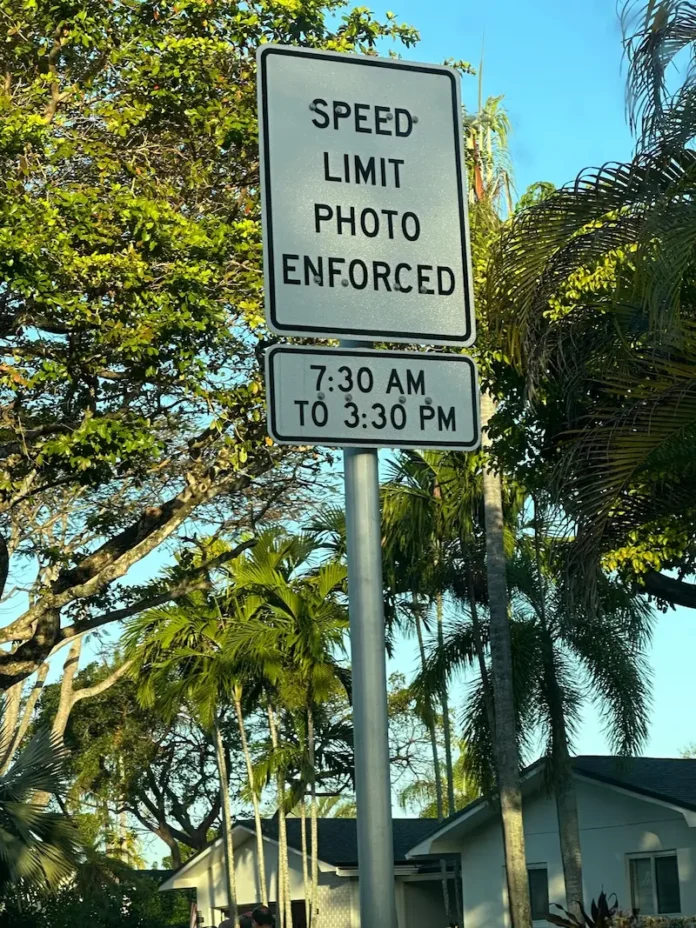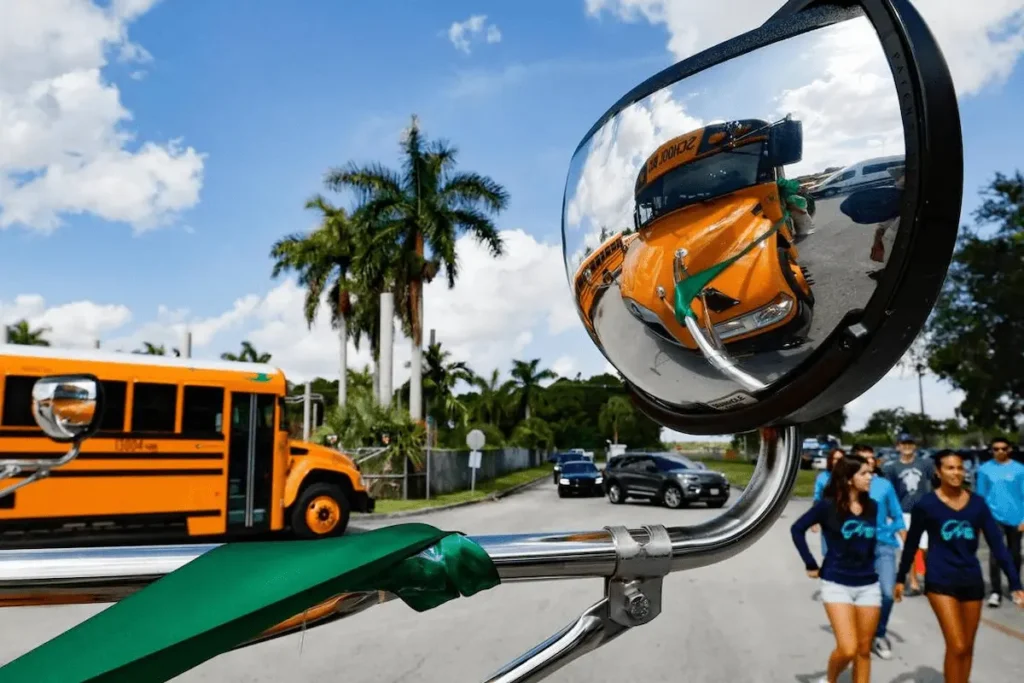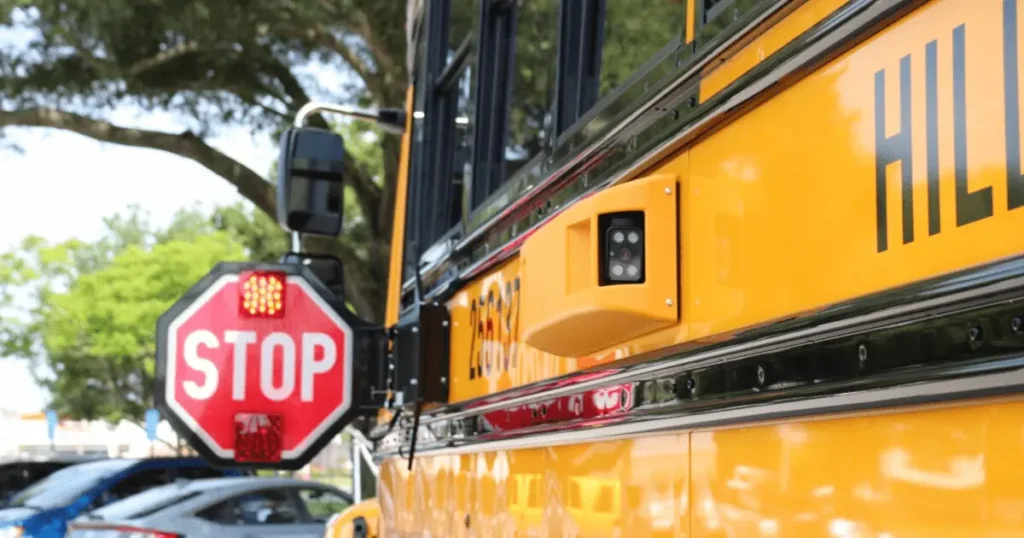|
Getting your Trinity Audio player ready... |
Tabla de Contenido/ Table of Contents
- 0.1 Child Safety vs. Revenue vs. Parental Stress: The Debate Over Speed Cameras in Miami-Dade Schools and School Buses
- 0.2 Privatization of Traffic Signals: Who Controls Safety?
- 0.3 Hidden Costs for the County
- 0.4 Safety Benefits: An Effective Solution?
- 0.5 Contradictions and Criticism: Confusing Signs, Hidden Interests?
- 0.6 Schedule Table by Educational Level
- 0.7 Traffic Restrictions and Parental Stress: Protection or Control?
- 0.8 The Neighborhood Dilemma
- 0.9 Parental Frustration vs. Neighborhood Convenience
- 1 Solutions or Punishments?
- 2 School Bus Cameras: Record Fines and the Safety Dilemma
- 3 Impact and Controversy
- 4 The Debate: Safety or Business?
- 5 Proposals for a Fairer Model
Child Safety vs. Revenue vs. Parental Stress: The Debate Over Speed Cameras in Miami-Dade Schools and School Buses
The arrival of speed cameras in Miami-Dade school zones has sparked hopes of reducing accidents but also criticism over a multimillion-dollar contract with a private company, contradictions in traffic signs, and doubts about the true purpose of the program.
Privatization of Traffic Signals: Who Controls Safety?
Miami-Dade County signed a contract with RedSpeed, an Illinois-based company, to install and operate speed cameras in school zones. Under this agreement, the company receives $20 for every $100 fine, translating into $12 million annually for the company, while the county retains the rest. This model raises concerns:
- Outsourcing of public services: Road safety, traditionally a government duty, is now dependent on a for-profit private company.
- Local fund leakage: Part of the fine revenue leaves Florida instead of being fully reinvested in local improvements (e.g., signage or traffic education).
For comparison, in Chicago, where companies like Redflex operate cameras, 40% of fine revenue goes to the company—an arrangement criticized for diverting resources away from community projects.
Hidden Costs for the County
Although the contract with RedSpeed was promoted as “no upfront cost” for Miami-Dade, there are indirect expenses:
- Technical maintenance: Software updates and camera repairs often include clauses that increase costs over time.
- Fine processing: County staff must spend hours reviewing and handling disputes, a cost not always accounted for in the agreement.
According to a 2023 report, 30% of funds collected in similar programs nationwide are consumed by administrative expenses and payments to private contractors.
Safety Benefits: An Effective Solution?
The cameras, which will operate half an hour before and after school hours, aim to curb speeding in areas where students walk. Cities like Pinecrest and South Miami, pioneers in using these systems, report thousands of fines issued since implementation.
According to state law, only drivers exceeding the speed limit by 10 mph or more receive fines. But?
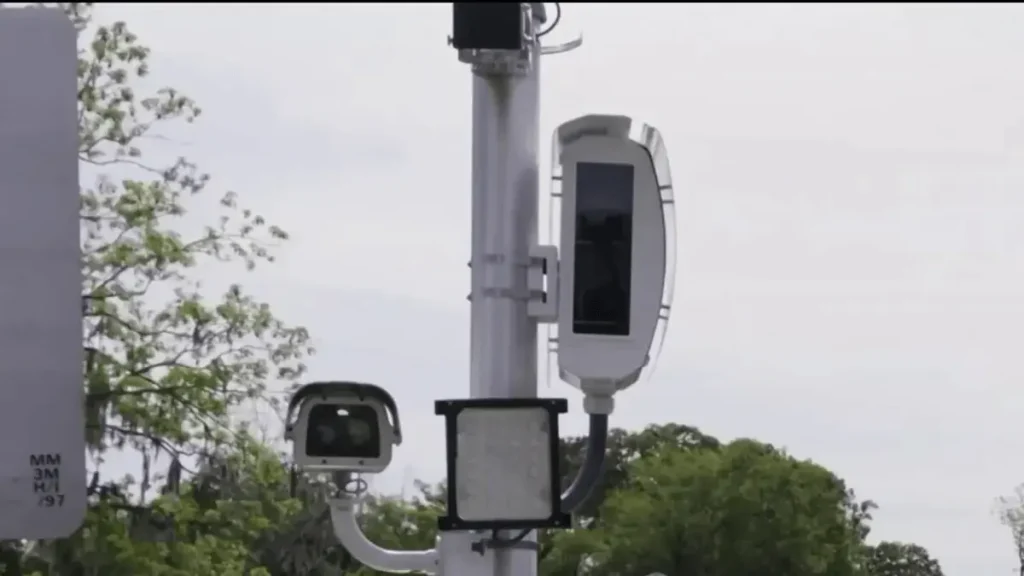
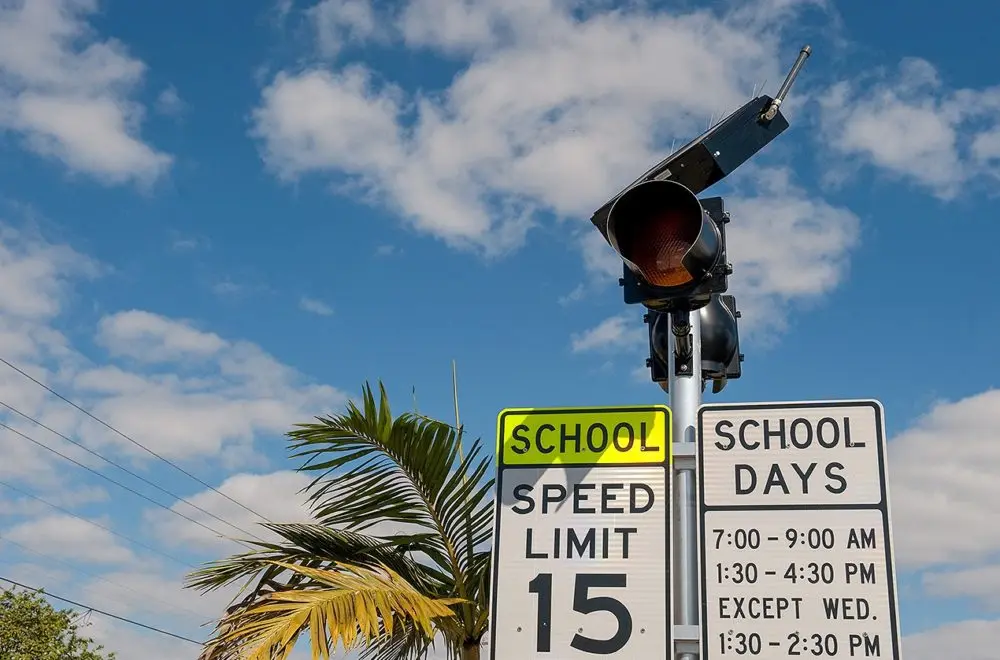
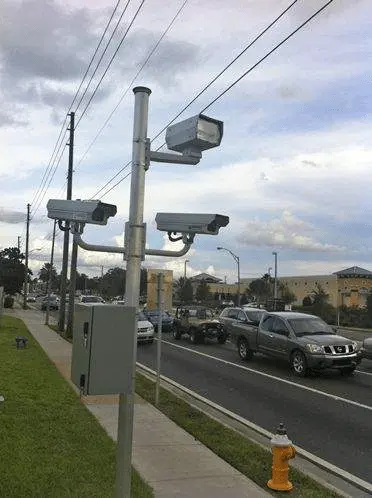
Contradictions and Criticism: Confusing Signs, Hidden Interests?
Despite the safety narrative, the program faces scrutiny:
Effectiveness vs. Traditional Measures:
- Safety or Revenue?
- Miami-Dade projects 600,000 fines annually, fueling suspicions that the real goal is financial.
- Of each fine, $39 goes to the local police department, creating a possible conflict of interest.
Inconsistent Traffic Signs:
- Some school zones have poorly marked speed limits or outdated signs, which could lead to unjust fines.

“SPEED LIMIT PHOTO ENFORCED”
Content: Indicates that the speed limit is “SPEED LIMIT PHOTO ENFORCED” from 7:30 a.m. to 3:30 p.m.
Purpose: Sets forth the general period in which cameras are activated to monitor speed, but does not specify the numerical limit.
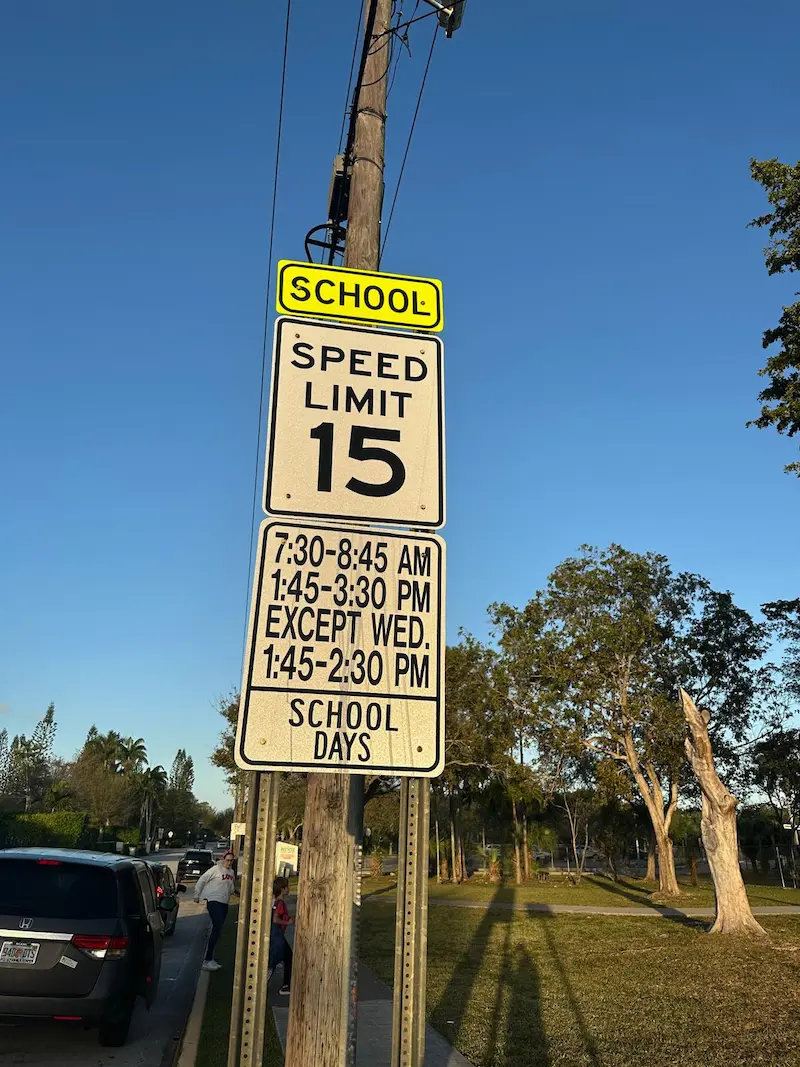
El horario de 7:30 AM a 3:30 PM mencionado eThe first sign does not refer to the 15 MPH limit, but to the period in which cameras are active to monitor speed. The reduction to 15 MPH only applies during the specific time slots detailed in the second sign:
15 MPH times:
Monday to Friday: 7:30-8:45 AM and 1:45-3:30 PM.
Wednesday: 1:45-2:30 PM (exclusive).
Outside these specific times, but within the surveillance period (7:30 AM to 3:30 PM), the speed limit would be the normal speed limit for the road (example: 25 MPH or 30 MPH), although still monitored by cameras.
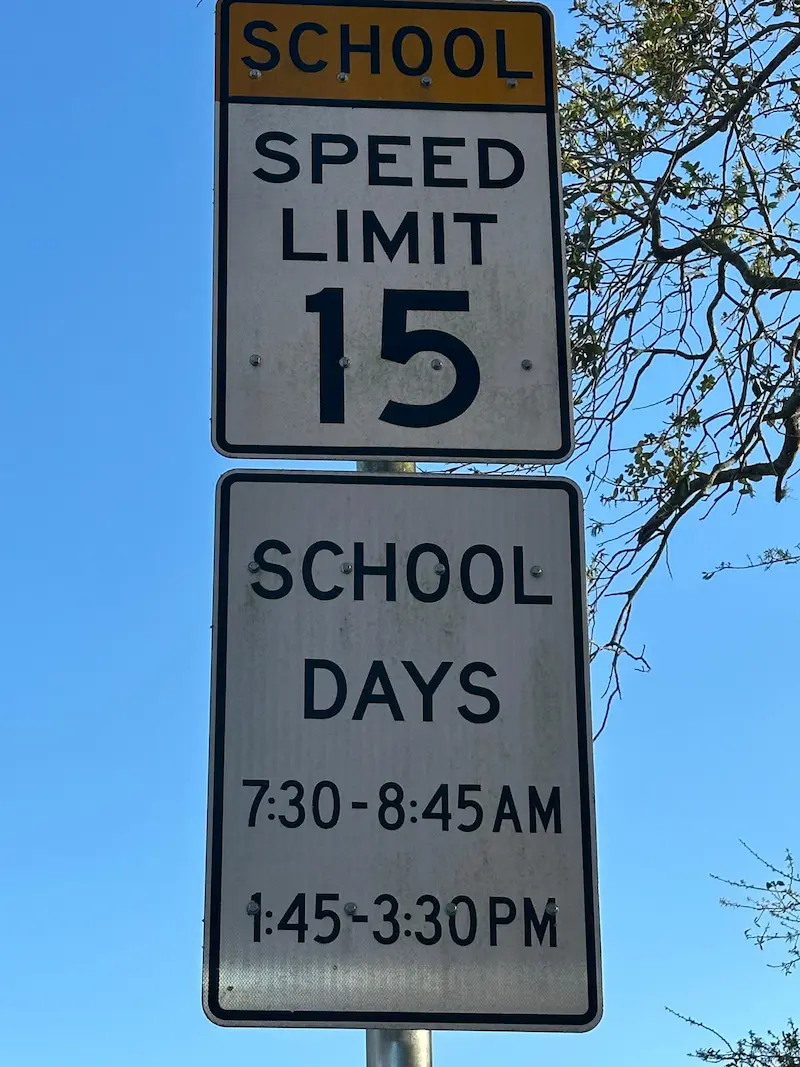
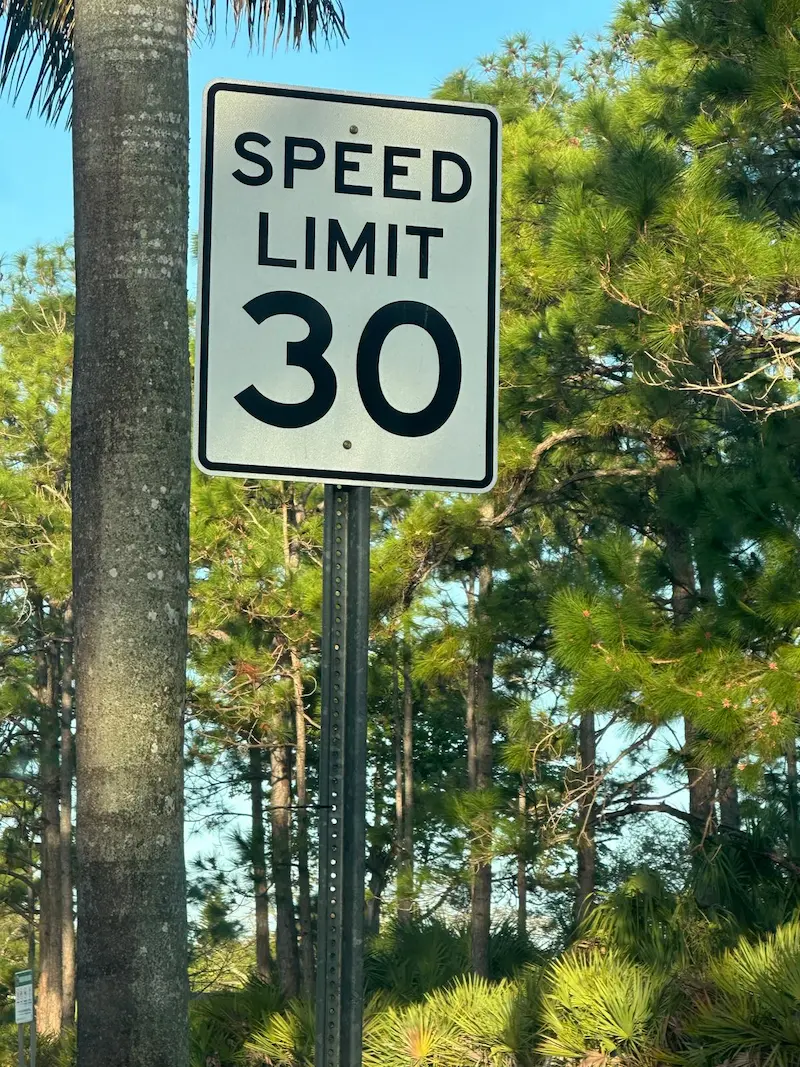
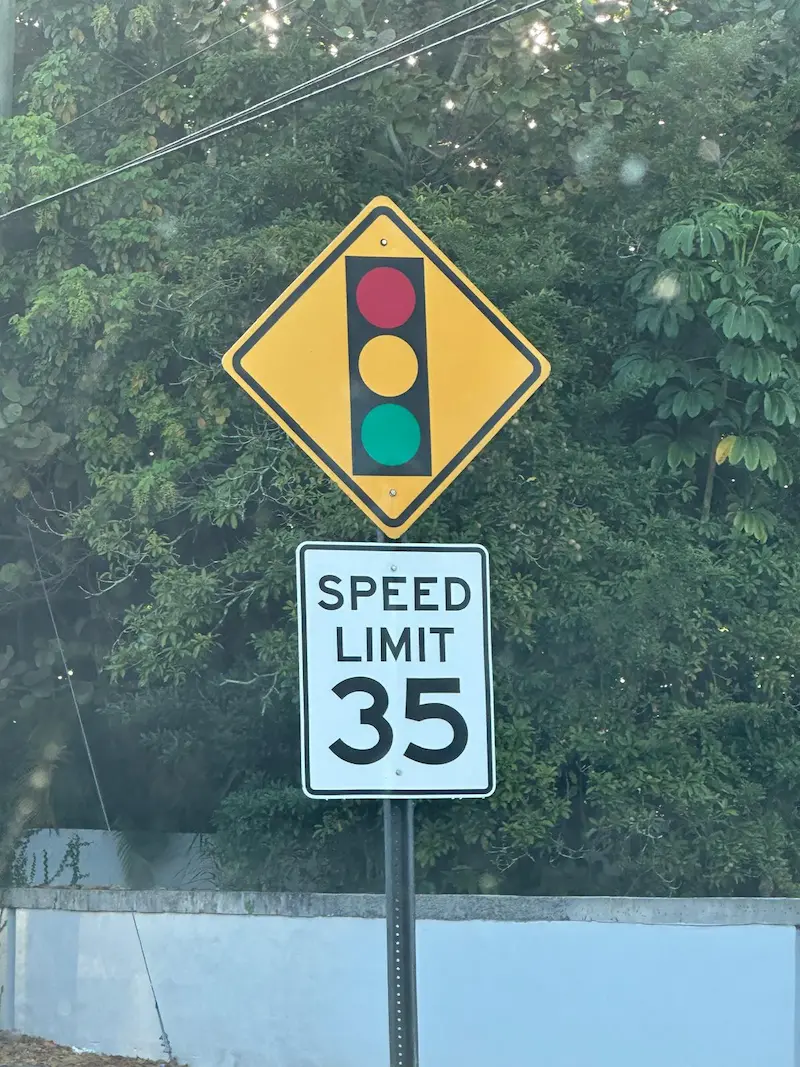

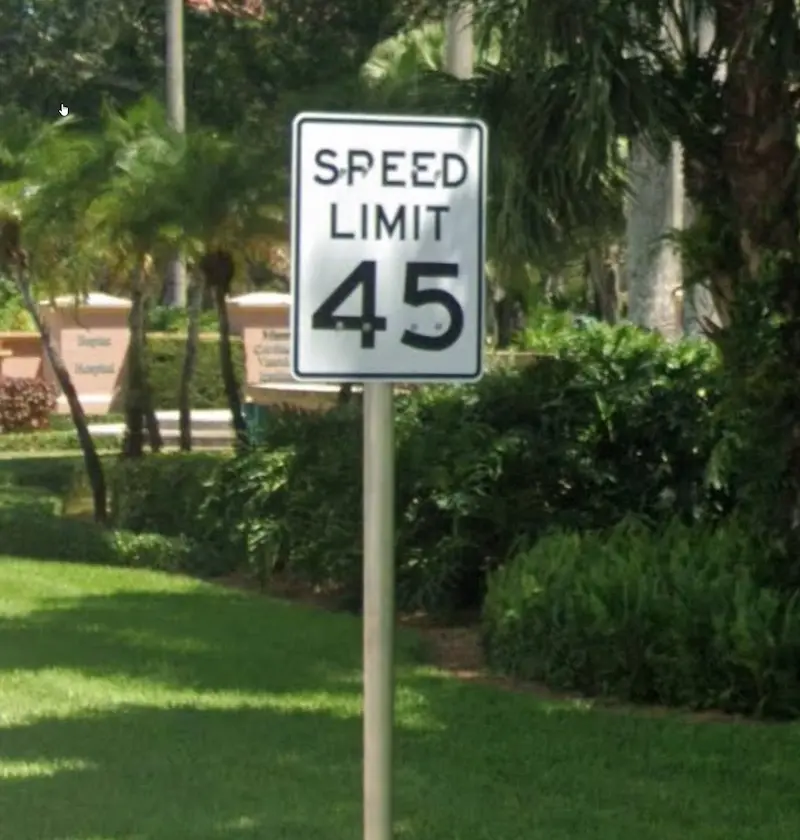
Schedule Table by Educational Level
| Educational Level | Start Time | End Time | Notes |
|---|---|---|---|
| Daycare/Preschool | 7:00 a.m. | 12:00 p.m. – 6:00 p.m. | Some centers offer extended hours. |
| Elementary Schools | 8:00 a.m. – 8:30 a.m. | 2:00 p.m. – 3:00 p.m. | Schedules vary by school. |
| Middle Schools | 8:00 a.m. – 8:30 a.m. | 3:00 p.m. – 3:30 p.m. | Extracurricular activities until 5:00 p.m. |
| High Schools | 7:20 a.m. – 7:45 a.m. | 2:20 p.m. – 2:45 p.m. | Advanced courses or dual programs may extend hours. |
Traffic Restrictions and Parental Stress: Protection or Control?
Beyond speed cameras, another factor aggravating parental stress in Miami-Dade is the traffic restrictions imposed by residential neighborhoods near schools. Signs prohibiting left or right turns—or even full street access between 7:00 a.m. and 9:00 a.m.—have created a conflict between residents and families with school-age children.
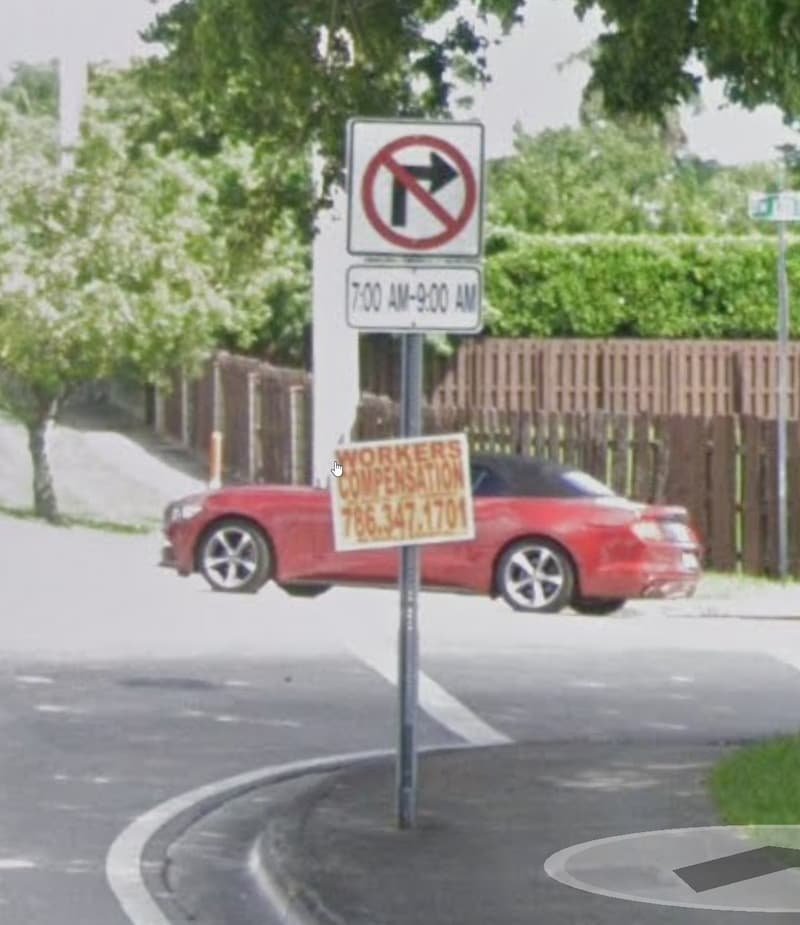
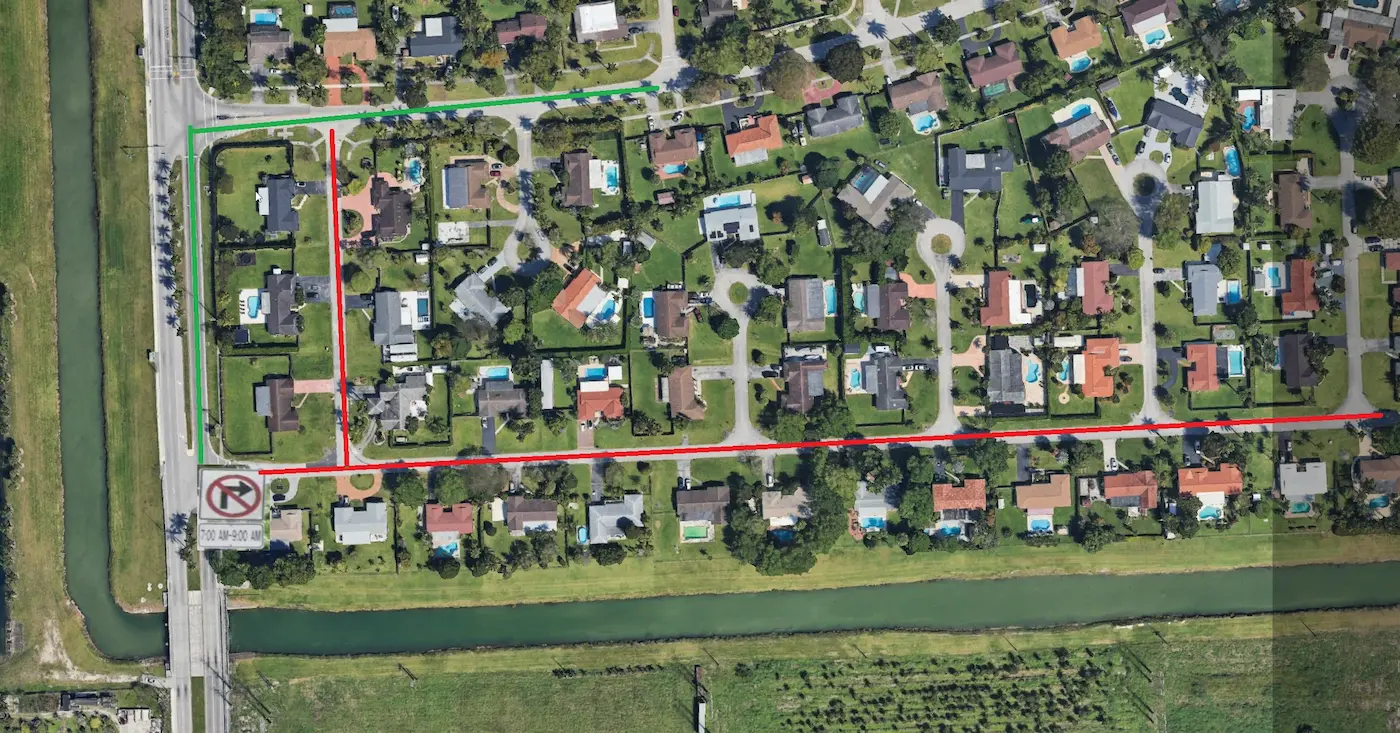
The Neighborhood Dilemma
Some communities have installed signs blocking vehicle passage during peak school hours, citing congestion and safety concerns. However, these measures often affect parents who, in their rush to drop off their children, are forced to take extensive detours or face fines for breaking the rules.
A police officer revealed that any resident can request a no-passing sign by calling 311, a process that some neighbors use to keep morning traffic away from their streets, even if they are more than two miles from the school.
Parental Frustration vs. Neighborhood Convenience
The issue worsens when signs are placed far from schools, in areas where parent traffic does not pose an obvious risk. Logical questions arise:
“How does a street two miles from the school affect children’s safety? This seems more like a whim than a necessary measure.”
Solutions or Punishments?
The combination of speed cameras and traffic restrictions has created an environment where parents feel doubly penalized: first, through fines tied to strict speed limits, and second, for violations on blocked streets that do not even directly surround schools.
- Economic Impact: Fines of up to $100 or $225 for violating turn or access restrictions add financial pressure to families already struggling with the high cost of living in Miami.
- Lack of Empathy: Some childless residents prioritize their comfort over the logistical needs of families, ignoring that schools are a community service.
Final Reflection: Where Is the Limit?
As speed cameras and traffic restrictions multiply, the debate goes beyond child safety and delves into a clash of community or financial priorities in Miami-Dade County.
But in a county where parental stress is already high, the lack of dialogue between neighbors, authorities, and families could turn the pursuit of safety into a silent urban war, where access to school routes is disrupted simply due to no-right-turn signs from 7:00 a.m. to 9:00 a.m.
Child safety should be based on prevention, ensuring and verifying that school zones have the necessary basic signage, including flashing yellow lights indicating school hours, before installing cameras.
School Bus Cameras: Record Fines and the Safety Dilemma
In just two weeks of the 2024/2025 school year, cameras installed on 950 Miami-Dade school buses fined 11,500 drivers for failing to stop when the bus deployed its STOP sign, generating $2.5 million in fines ($225 per violation).
This system, driven by a 2023 state law, reignites the debate over whether automation prioritizes child safety or revenue generation.
How the System Works
Technology and Scope
- The buses, managed by BusPatrol, use AI-powered cameras that capture license plates of vehicles illegally passing a school bus when its flashing red lights and STOP arm are activated.
Legal Context
- The law already requires drivers to stop for school buses with deployed signals, but cameras add automated enforcement to an existing rule.
Impact and Controversy
Alarming Numbers
- According to the Miami Herald, 1,600 fines are issued daily on school days.
- Nationwide, school buses are illegally passed 43.5 million times per year, according to NASDPTS.
Tragic Case
- In April 2024, a 6-year-old child was fatally hit in Polk County, Florida, after getting off a school bus—a reminder of the dangers of ignoring these rules.
The Debate: Safety or Business?
Revenue Collected
Authorities claim the money is reinvested into the program, but the record-breaking $2.5 million in two weeks raises concerns:
Is this a genuine effort to protect children or a financial incentive to privatize road safety?
Visual Evidence
The Miami-Dade Police Department released videos on social media showing drivers illegally passing school buses, even with children nearby. This reveals a concerning pattern:
The normalization of ignoring school safety signals.
Technology vs. Road Culture
The success of school bus cameras depends on balance:
Transparency: Are audits conducted on how the millions collected are used?
Education: Are drivers being informed on how and why they must stop?
Equity: Do the fines disproportionately affect low-income communities?
“With the number of violations we see, it’s a miracle there aren’t more accidents.”
But the solution cannot be just punishment—it must include prevention, education, and clear signage.
Traffic Safety Education: The Missing Piece
Cameras and fines are reactive, but proactive prevention is sorely lacking:
- Sporadic campaigns: In Miami-Dade, school zone safety workshops are held only at the start of the school year, with no follow-up.
- Confusing signage: Some schools have outdated signs or unclear markings, increasing the risk of unintentional violations.
In contrast, cities like Austin, Texas, invest 15% of fine revenue into permanent educational programs, including:
Driving simulators for students
Interactive LED signage
Year-round road safety workshops
Proposals for a Fairer Model
Transparent contracts: Publish full agreements with private companies, detailing revenue-sharing percentages and responsibilities.
Local fund retention: Ensure at least 80% of collected funds are reinvested within the county (e.g., road improvements or safe transportation scholarships).
Ongoing education: Monthly campaigns on social media, collaborations with schools to teach parents and students, and dynamic LED signage for real-time driver alerts.
Tips for Complying with the New Law on Cell Phone Use While Driving
The new legislation on cell phone use while driving, including Law HB 825 (2023), establishes stricter restrictions and harsher penalties for those caught handling a mobile phone behind the wheel. Here are some key tips to avoid fines and drive safely.
Where Does the New Law Apply?
Holding or using a cell phone while driving is prohibited in:
- School zones, when warning lights are active.
- Work zones, with visible signs and personnel present.
- Road maintenance areas, where equipment or workers are active.
Even if traffic is momentarily stopped (such as at a traffic light), you CANNOT hold your phone to text, call, or use apps.
What Is Prohibited?
Physically holding the phone, regardless of its use.
Calling, texting, or checking social media while driving.
Using the phone to view images or videos while driving (Double fine for this violation).
Handling the phone at traffic lights or in stopped traffic.
Reminder: Even if the vehicle is not moving, it is still a violation if you are in a restricted zone.
Exceptions: When Can You Use Your Phone?
Hands-free use (Bluetooth, speakerphone, or a dashboard mount).
A single tap or swipe to answer or hang up a call.
Emergency calls to 911 or similar safety services.
Emergency vehicle drivers (police, firefighters) performing official duties.
Fines and Penalties
First Offense:
$100 fine + court costs.
Repeated Offenses:
Higher fines + points on your driver’s license, which can affect your insurance rates and driving privileges.
Double fine if you are viewing images or videos while driving.
Tips to Avoid Fines and Drive Safely
Use a phone mount on the dashboard if you need GPS.
Set your phone to “Do Not Disturb” mode before driving.
Activate voice commands for calls or messages without touching your phone.
If you need to use your phone, park in a safe location before handling it.
Respect signs in school and construction zones to avoid penalties.
Reminder: This law is not just about issuing fines—it is about protecting your life and the lives of others. Using your phone while driving increases the risk of accidents and can have fatal consequences.
Drive responsibly and avoid unnecessary fines!
Want more post like this?
Head over to our homepage for the latest updates from South Florida and beyond:



